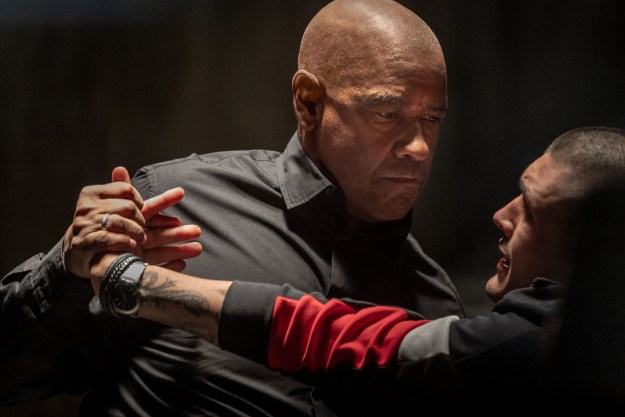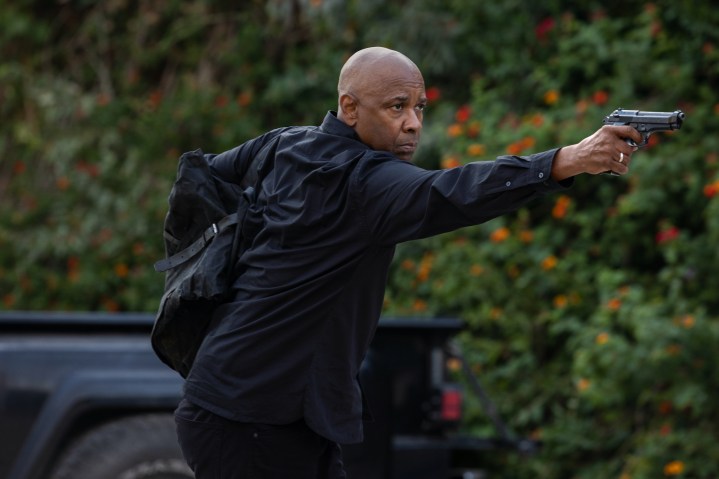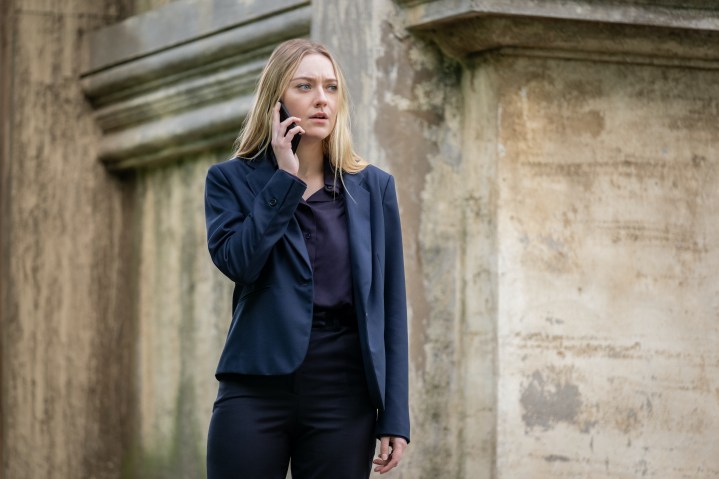
“Antoine Fuqua and Denzel Washington's The Equalizer 3 is a predictably gruesome, surprisingly contemplative sequel.”
- Denzel Washington's reliably commanding lead performance
- A striking visual texture and aesthetic
- A surprisingly patient, meditative pace
- A by-the-numbers vigilante plot
- An ensemble of one-note supporting characters
The Equalizer 3 opens in the wake of a massacre. Its prologue follows the owner of an Italian vineyard as he discovers, much to his horror, that the violence that has recently struck his property is far from over. However, while the new, Antoine Fuqua-directed thriller finds a way to pack in another Denzel Washington-manned, stopwatch-timed bout of carnage in its first few minutes, it’s the film’s eerie, quiet opening that proves to be truly emblematic of what is to follow. As shockingly brutal as its many set pieces are, the film is more interested in lingering in the aftermath of its protagonist’s violence than it is in the blood-soaked action itself.
That’s the most surprising and rewarding thing about The Equalizer 3. Of the now-three films that Washington and Fuqua have made together about Robert McCall, the former’s fictional, quasi-retired U.S. intelligence agent, it is easily the most contemplative and thoughtful. That doesn’t mean The Equalizer 3 is all that surprising of a movie, nor does it mean that it’s a particularly noteworthy effort from either Fuqua or Washington. At its core, the film is still a B-level action movie that is committed to sticking to its franchise’s formula.
Anyone who wasn’t charmed by the first two Equalizer films likely won’t, in other words, be won over by Fuqua’s latest sequel. Those who have enjoyed the franchise up to this point, however, may very well find themselves not only invested in The Equalizer 3’s plot, but also surprised by its meditative pace and, at times, affected by its exploration of its hero’s fractured, lonely mind. As shallow as its depths may be, the film also isn’t as superficial as it initially appears.

Set five years after the franchise’s second installment, The Equalizer 3 picks back up with Washington’s Robert McCall in the moments immediately after he’s single-handedly killed nearly every guard present at the Sicilian home of an internationally wanted criminal. The reason for McCall’s presence at said Italian villa isn’t immediately clear, but it also doesn’t need to be. What matters more is the coldness with which the character dispatches his enemies, as well as the wound he suffers at the hands of a surprising culprit, which sends him into the care of Enzo (Remo Girone), the local doctor in a nearby, mountainside village.
Injured and forced to exist at a slower pace than he’s used to, Robert finds himself increasingly charmed by the residents of Enzo’s tiny Italian town. Despite how haunted he feels by his past actions, Washington’s former marine begins to embrace the idea of settling down and starting over in the tight-knit community he’s accidentally fallen into. That dream is challenged, however, by the Italian mobsters who have made a habit out of threatening and scamming the very people Robert now sees as his friends.
Headed by brothers Vincent (Andrea Scarduzio) and Marco (Andrea Dodero), The Equalizer 3’s blunt-force crime outfit gives the film’s protagonist the chance to use his dangerous skills to rid his neighbors of their biggest harassers. The film, consequently, reframes Robert’s inevitable, murderous acts as well-intentioned efforts to help the good people around him in much the same way that the previous Equalizer films have. While it inevitably indulges in its hero’s violent impulses, though, the movie also spends more time contemplating the impact of Robert’s actions than either of its predecessors.

The Equalizer 3’s more patient approach makes the fight sequences of its second half land with considerable force. That’s particularly true of one late-night confrontation between Washington’s Robert and Dodero’s Marco, which initially makes spectacular use of the former’s clear-eyed, magnetic stillness before allowing him to unleash the full might of his still-unrivaled on-screen physicality. The sequence in question leads to several unsurprising, gratuitously bloody moments, but this time around, Fuqua and Washington make the deaths Robert causes seem less like self-indulgent exercises in brutality and more like the natural outcome of his mere presence.
In The Equalizer 3, Fuqua reframes the character as not just a sharpened vessel for violence, but as an angel of death. During his daily walks through the film’s central Italian village, Fuqua frequently positions Washington within view of various religious symbols and crosses. These compositional decisions not only play into the sequel’s heightened sense of spirituality, but also emphasize the increasingly mythic quality of its protagonist. In its third act, Fuqua takes the film’s visual metaphors too far by relying too much on cutaways to certain stained glass religious images, but these missteps don’t take away from the cumulative power that The Equalizer 3 grants Washington’s McCall.
Thematically, the film has more in common with several of its star’s previous, non-Equalizer action movies, including 2004’s Man on Fire. The film even, notably, reunites the stars of its underrated, Tony Scott-directed predecessor by pairing up Washington in several scenes with Dakota Fanning. The actress has a small, but noteworthy role in The Equalizer 3 as Emma Collins, an up-and-coming CIA agent whom Robert unofficially takes under his wing. For the most part, Emma’s inclusion feels unnecessary to the film’s overall plot, but there’s enough electricity present in her and Washington’s scenes together to forgive the superfluous nature of Fanning’s character.
Narratively, The Equalizer 3 doesn’t reach the same depths as Man on Fire, nor does it ever achieve the same level of visual splendor. Fuqua and cinematographer Robert Richardson do, however, bring a strikingly desaturated, black-and-white-esque aesthetic to the film that helps elevate its themes of morality, violence, and history. Washington’s all-black costumes often stand in stark contrast to the chipped and peeling white walls of the movie’s centuries-old Italian village, which gives it a richer visual texture than either of the first two Equalizer films.
What do all of these touches amount to? A movie that is, in many ways, a satisfying extension of its series’ previous installments. The Equalizer 3 is, by no means, a spectacular or particularly dense action film. It may be coming out nearly 10 years after the first Equalizer, but its pleasures remain just as obvious and reliable as those offered by that 2014 blockbuster. Ultimately, the best thing that can be said about The Equalizer 3 is that it is both content to deliver the same things as its predecessors and also interested in reaching farther than either. The result is a thriller that is just as straightforward as its subject matter demands, but also more interesting than it ever needed to be — if only slightly.
The Equalizer 3 opens in theaters on Friday, September 1.
Editors' Recommendations
- 3 action movies on Netflix you need to watch in April 2024
- 3 action movies on Netflix you need to watch in March
- 3 action movies on Netflix you need to watch in February
- 3 great Netflix crime movies about the mafia you should watch in January
- 3 action movies on Netflix you need to watch in January




